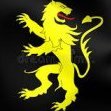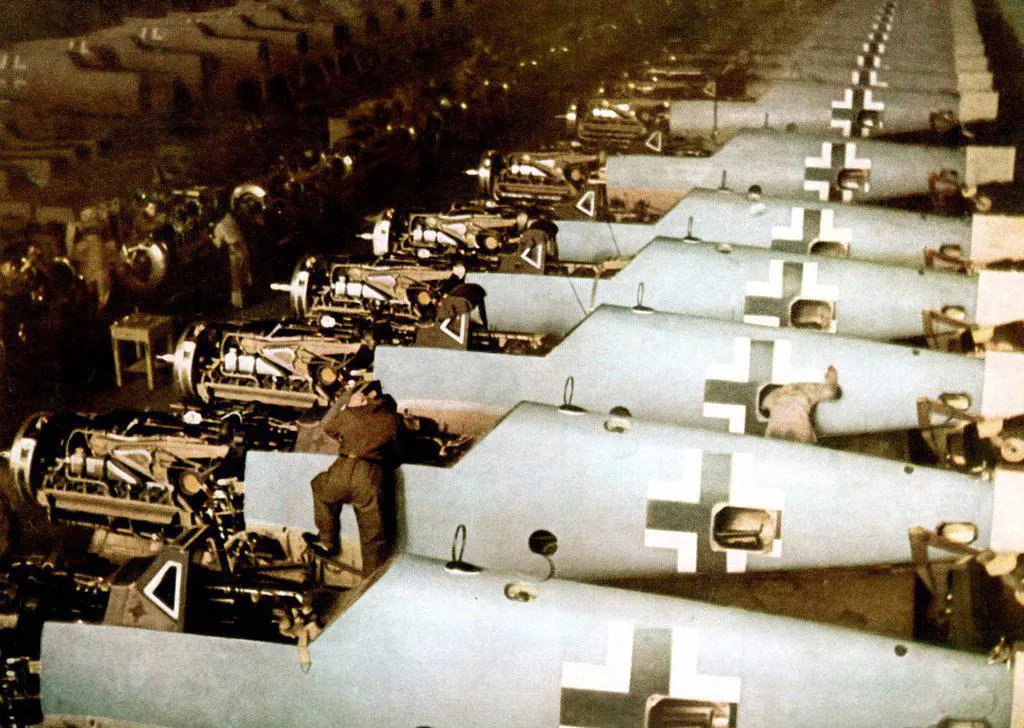-
Posts
1,055 -
Joined
-
Last visited
Content Type
Events
Profiles
Forums
Media Demo
Posts posted by Werdna
-
-
12 for me, although some of them were calculated guesses. In my defence, I've only ever seen the films..
-
 2
2
-
-
4 hours ago, Duncan B said:
Looking at the 'box art' for the Quickboost parts it looks like the part they have made for the Tamiya kit is a better shape (or at least not flipped!). I wonder if it could be adapted to work with the Eduard kit?
Makes you question if QB themselves ever wondered why the two parts (ie Tamiya and Eduard) were so apparently different in shape..
-
 1
1
-
-
Hi all
Not sure if this has been posted before. I just came across this while browsing (as you do). It appears to be a Danish TV feature on Fliegerhorst Grove during WW2. It's in Danish (unsurprisingly), but also with some English and German language commentary. Interesting to me as it seems to contain a lot of period movie and still photography which I hadn't seen before. I found it fascinating..
This is a link to one of the clips - others can be found at the bottom of the page
-
 2
2
-
 3
3
-
-
Nice work Jack - that's a great result.
Coincidentally, I was in Cuba a few weeks ago - and pretty much everything there looks tired and dirty, so there's no reason why the MiG should be any different..

-
 1
1
-
-
Looking good, but you might want to edit the title of your post for accuracy. 'Fokker' was a Dutch aircraft manufacturer, while 'Focke Wulf' built the plane in question...

-
 1
1
-
-
I don't think German tyre production was a whole lot different to any other nation's production, tbh. There may have been some material shortages later in the war which might have affected the colour perhaps. Either way, most tyres come out of the mould 'black', but eventually weather and age to various shades of grey, depending on theatre or surface conditions.
-
 1
1
-
 1
1
-
-
A 'straightforward' build is likely to rule out Eduard, IMO. Which just leaves Tamiya and Hasegawa. I doubt if either is going to be 100% accurate, but I've built both and they were both enjoyable builds - and both ended up looking like 190s..

-
 1
1
-
-
Congrats - excellent work. In many ways, it's more difficult to model a much-photographed a/c than it is to model a less-photographed one and that is a superb result.
-
2 hours ago, Graham Boak said:
Quite sensible if this was the 76 topcoat, with only the top of the fuselage colours and mottle to be added.
I'm still not seeing it. By the time of the G-6, fuselage camo demarcation was well below the top of the cross, so I don't see how painting the cross and then (presumably) masking it again in order to apply the rest of the camo would be at all expedient. I'd always assumed that markings and stencils were applied last, but there we are...
-
Just wondering what the logic was in applying the fuselage balkenkreuz on airframes which (presumably) have yet to receive a final camo coat...
-
1 hour ago, Phantome said:
A completely different color though, which only recently was "discovered" what it actually looked like (IIRC a maritime color).
You may be right, I don't know - but with several different shades of RLM76 already documented - and given that the official designation of the colour in question seems as yet unknown - who is to say that it definitely was a 'completely different' colour?
-
4 minutes ago, GiampieroSilvestri said:
Aufgrund der technologischen überlegenheit der Ikarol Einschicht Schutzanstriche für Leichtmetall,dem Hauptbaustoff von Flugzeugen,hatte dieser Schutzanstrich bis 1939 alle anderen vom Markt verdrängt
Online translator suggests the following:
"Due to the technological superiority of the Ikarol single-layer protective coatings for light metal, the main construction material for aircraft, this protective coating had displaced all others from the market by 1939"
-
 1
1
-
-
21 minutes ago, Graham Boak said:
No link with any late-war colour is evident or necessary.
No link other than a strong similarity in the appearance of the two colours?
Like I said, I'm not dismissing anything - as far as I'm concerned the zinc chromate/pigment argument is no more or less valid than the potential existence of another discrete colour..
-
3 hours ago, Graham Boak said:
Is this one still running? The key problem here is that if "German Sky" was adopted after the 1941 trials, then it would have been issued with a number that was necessarily before the 81/82/83 series. I see no reason for doubting that what is on the Ju.88 is such a colour, but that is far from it having a long, if spasmodic and unphotographed, existence in the years in between a heroic revival in 1945. The problems with anecdotal evidence have been well described, those with colour film were best demonstrated to me by the purple Bf.109Fs in the Kookaburra reference. I had a 109F model all lined up for that before I was enlightened! Perhaps I should have made it with Sky undersides?
Which explanation best explains the facts with the fewest assumptions? To me, not this one.
I'm making no such claims Graham. I'm just suggesting that there is evidence of such a colour being in use long before 'late war'. I get the issues with colour film, but in this particular pic, there is evidence of both 65/76 and the 'late war' colour. I have no explanation for why it does not appear on the RLM charts, but in this case, evidence of absence does not equate to absence of evidence.
-
 1
1
-
-
9 hours ago, Phantome said:
Late in the war, shortages of those pigments mean that RLM 76 had a higher percentage of zinc chromate and thus began looking more yellow, almost like RAF Sky. This is the famous late war version of RLM 76 which for a long time was erroneously referred to as RLM 84.
The trouble with that proposition is that there is evidence of 'RLM84' (or however you want to refer to it) being used as early as 1941, notionally before any 'shortages' were experienced. Link to a previous recent thread here...
-
19 hours ago, Jochen Barett said:
Don't trust anybody's color corrections
Tut - none of those fuselages have been pre-shaded. They'll all have to be done again...

-
 1
1
-
 9
9
-
-
3 hours ago, Troy Smith said:
Not Bakelite. Common misconception, its Synthetic Resin Bonded Paper.
The material is still around and widely used. I believe 'Tufnol' is one of the brand names still in use - historically with a dark red/brown appearance...
-
 1
1
-
-
There's a whole new genre opening up here - I like it..

-
1 hour ago, GiampieroSilvestri said:
I am sorry but RLM 83 is dark blue.The dark green most probably is a variation of RLM 82.
Saluti
Giampiero
Troy is simply quoting from the 2016 article. Hence the quotation marks....
-
 1
1
-
-
In 1946, the 'Whif RLM' identified neon yellow and luminous pink as the most effective nightfighter colours, applied in diagonal stripes. Prove me wrong....
-
 2
2
-
-
332884 is on an AIMS decal sheet - link here to the Hannants page: https://www.hannants.co.uk/product/AIMS48D024?result-token=SMhMh
Appears to be on back-order at Hannants, although might be available elsewhere..
-
 1
1
-
 1
1
-
-
5 hours ago, Zephyr91 said:
Hi, just seen this so apologies for late response.
Really just a note of caution. Yes prop-swirl effects can cause assymatric surface flow and hence oil staining. However, before adopting this pattern as standard practice I would like to know whether this is consistent on other aircraft, or is this a one-off effect only on this one.
It does seem rather a marked effect on that photo. If one is lucky eneough to have both port and starboard views of a Hurricane or Spitfire or Defiant, say, it is sometimes possible to note a slight difference between the sides in the exhaust staining patterns, which might be due to prop-swirl effects - but it is not very obvious.
However, I suspect the hard part of answering my question will be to find a clear photo of a different aircraft (or more) of the same type taken from the same angle. I did a very quick groogle, but didn't find anything although I'll now keep looking.
Sorry if that just puts a spanner in the works, but I would be interested to find out whether its common or not.
Cheers
Rob
That's fair comment. For my own part, it was just an observation that I have always sprayed the staining straight down the middle (on the a/c in question) without ever considering whether that was correct or not. True, this is a 'sample of N=1', so it would be interesting to see if there were any more examples of this kind of pattern out there. Or maybe this particular aircraft only ever flew in cross winds..

-
 1
1
-
-
-
It's not you - it's the kit ! But that is an excellent rendition of it..

For some reason, Eduard has stubbornly refused to address the obvious and well-known issues with this kit. I gave up building them a while ago...
-
 1
1
-





Danish TV story about Grove airfield
in Aircraft WWII
Posted
Grove, Chalgrove, Shepherd's Grove.....any more Groves..?